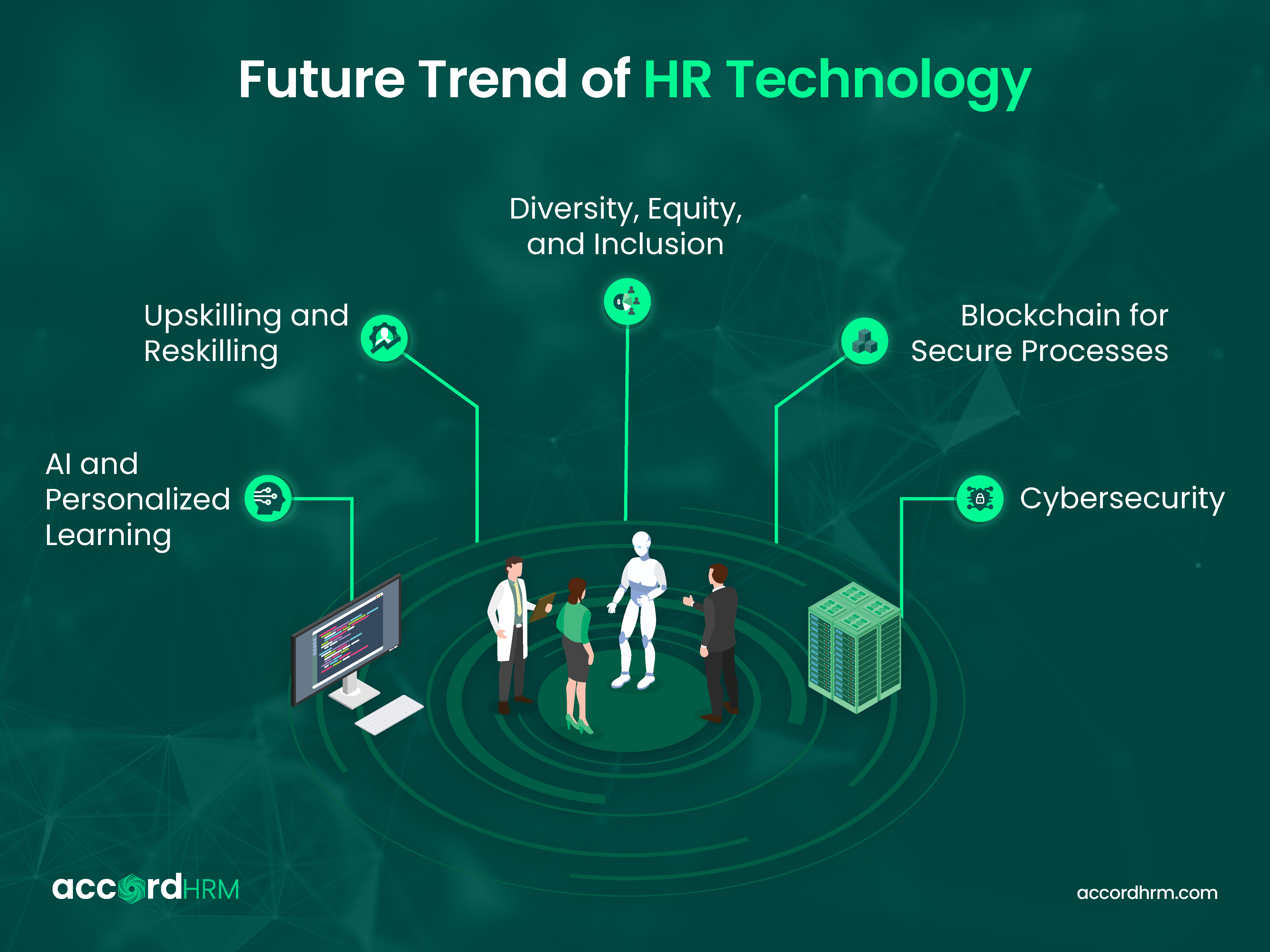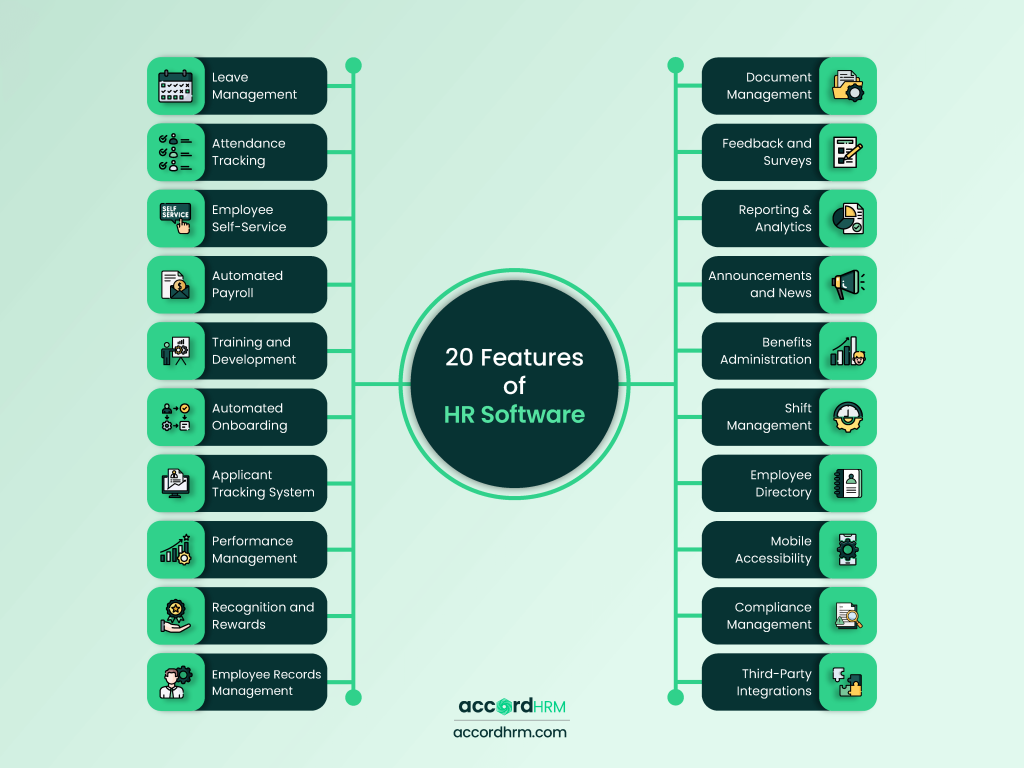
Benefits of implementing HRIS
In the era of talking fridges and virtual assistants, home automation is just the tip of the iceberg of what…
The demand for HR software solutions is sparked by the ever-expanding corporate environment in Bangladesh.
With the essential features of HR software, companies operating in Bangladesh can enhance operational efficiency, strengthen employee engagement, and manage complex HR activities.
HR software has become very essential in managing the employee management challenges of companies operating under changing trends in employment and technology breakthroughs.
What factors are driving this shift towards adopting modern HR systems in Bangladesh?
The increasing trend of adopting HR software in Bangladesh is driven by the dire need for digital transformation and efficiency in HR management.
We will explore how new technologies in HR are emerging, how Bangladeshi companies are using HR software, and highlight the key factors to consider when choosing the right HR software.
This will help you make a smart investment for your organization.
Key Takeaways
The future of HR technology is set to be driven by several transformative trends that aim to enhance both organizational efficiency and employee experience.
Key areas to watch include:

Artificial intelligence will play a significant role in personalizing employee learning experiences.
Platforms will assess skills, learning styles, and career goals to offer tailored training, with microlearning and predictive analytics helping bridge skill gaps.
As the workplace evolves, companies will prioritize continuous learning.
AI-driven platforms will offer dynamic, self-directed learning experiences, and microlearning will dominate as a means to quickly develop skills.
HR tech will help track and improve diversity metrics, utilizing tools to reduce biases in recruitment and foster more inclusive work environments.
Blockchain technology is expected to become crucial in securing HR data, improving transparency in credential verification, and automating processes like smart contracts.
With the growing reliance on digital tools, companies will need to prioritize cybersecurity, especially to protect sensitive employee data in an increasingly tech-driven HR landscape
These technologies are part of a larger movement toward making HR more data-driven, personalized, and secure, as organizations prepare for a rapidly changing future workforce.
Bangladesh’s businesses are embracing new technology as a result of the country’s steady adoption of advances in international trade.
Since its inception, HR software in particular has gained widespread acceptance. Using HR management software is essential in Bangladesh because of the country’s distinct organizational structures and work conditions.
Automated processes attract quality hires, facilitate an easy experience for new hires, and reduce the time-to-hire cycle — all valuable in a tight labor market.
Self-service options, wellbeing programs and feedback tools improve both job satisfaction and retention, crucial to meeting the needs of a tech-savvy millennial workforce.
Integrated compliance management assists companies in adhering to workplace standards, maintaining accurate payroll, and ensuring timely tax filings.
Analytics can enable HR teams to identify workforce trends and make better decisions regarding talent management, resource planning, and highlighting areas that need additional attention.
It helps you to meet the growing number who require flexible work arrangements through virtual collaboration, remote performance tracking and real-time reporting provided in top HR software solutions demands flexibility.

Unplanned absences hamper overall productivity, therefore it’s important to keep a track of such leaves.
HR software integrated with absence management tools automatically records leave without pay, vacation time-off, medical leave and sick days ensuring accuracy in the record making process as well as the compliance part.
This feature helps HR to monitor absenteeism trends and control them by taking timely action so that there are no shortages or depleted teams.
Accurate time monitoring is important for productivity, overtime, and payroll management. Buddy punching and manual entry are eliminated by an HR system that integrates payroll with time and attendance automation.
Additionally, it guarantees greater accuracy in payroll processing by empowering staff members to oversee their own schedule-related documentation.
Empowering employees to take control of their own data reduces HR’s administrative burden and increases employee satisfaction.
Self-service portals enable employees to update personal information, access payslips, request leave, and enroll in benefits on their own. It’s a win-win concept:
Employees will have easy access to HR services, and the HR team can reallocate its time and resources to focus on other strategic initiatives.
Errors in payroll can be expensive. The system effectively computes wages, taxes, bonuses, and deductions with automated payroll, guaranteeing that workers are paid on schedule.
This function eliminates the need for manual calculations thus minimizing errors and saving HR personnel’s time where they can focus on more strategic roles.
Moreover, it helps ensure that the company meets tax and employment law requirements.
Well trained employees are the backbone for any organization’s success.
HR software that comes along with training modules will help in standardization of orientation, job specific and skill development training.
Keeping a track on their progress and completion helps identify areas where employees need more practice or knowledge as well as it helps ensure no mandatory compliance training is missed out resulting in reduced audits friction.
First impressions are everything. With automated onboarding, new hires are easily guided through paperwork, training, and introductions. No longer does HR have to be burdened with collecting documents or scheduling orientations.
Instead, automating these tasks enables new employees to focus on learning their role and adapting to the company culture.
An ATS makes hiring easy by storing all candidate data, applications and interview notes in one place. It posts jobs automatically, filters resumes based on parameters set and keeps a tab on candidates at different stages of the recruitment funnel.
It not only saves time but ensures better quality of hires as it is not left to individual judgment or memory but follows a scientific process of hiring along with showcasing company’s seriousness right from the first interface with prospective employees.
Performance management tools in HR software help to facilitate continuous feedback, setting goals and tracking progress.
It facilitates compiling achievements, improvements required and aligning individual objectives on organizational level. This helps introduce a sense of responsibility, transparency and culture of development into your workforce.
Employee recognition and reward are crucial for employees’ motivation and loyalty.
From this perspective, modern HR software eases the process by providing tools for tracking achievements, managing incentive programs, and celebrating specific events in one’s career.
Features such as peer-to-peer recognition, performance-based rewards, and gamified systems improve a positive work atmosphere and increase employee involvement.
Automation of recognition processes ensures consistency and gratitude, leading to overall employee satisfaction and productivity.
Good record keeping is essential for compliance, performance tracking and efficient HR operations.
An HR software with a centralized employee records feature houses personal information, job history, pay rate, performance evaluations etc which allows the HR team to have instant access to such information hence improving response time in addressing inquiries and reducing errors.
Secure document storage helps reduce paper usage, prevents access to sensitive information, and allows access to data exclusively by authorized personnel.
Document management through HR software facilitates the secure storage of agreements, tax forms, and other essential documentation while allowing the company personnel access to saving or printing any required documents easily from one location improving work efficiency and data security.
Employee feedback is an important measure of employee satisfaction and reading the pulse of the culture. HR systems with feedback and survey features allow HR departments to solicit feedback directly from employees, openly, showcasing that their opinions are important.
These surveys can help identify morale concerns early so you can address them before they impact productivity or retention.
Data-driven insights are key to making strategic HR decisions. Having an HR software with analytics provides you with reports on trends around turnover rates, absenteeism, employee productivity etc.
Real-time data helps HR leaders to make more informed decisions about talent acquisition, employee engagement, workforce planning and response quickly to any trends or issues.
Consistent, transparent communication helps keep employees in-the-know and on track with company goals. HR software with an announcements feature allows HR administrators to blast updates, new policies, or notices about company-wide events to all employees.
This keeps drive-by shootings at a minimum but also ensures everyone has access to up-to-date information, contributing toward that sense of connectivity overall.
Managing employee benefits can be complex with differing health insurance options, retirement plans, and other perks.
HR software with benefits administration allows both the HR team and employees to easily enroll in or make changes to benefits.
This ensures that employees have access to the specific benefits they’ve chosen while enabling the HR department to better manage costs related to eligibility rules associated with benefit offerings.
Effortless scheduling keeps teams on track and minimizes business disruption. Besides that, the shift management feature in HR software enables managers to build employee schedules based on employee availability and puts a cap on overtime costs while managing workload distribution.
With it, employees will be able to view their schedules, request changes, and even get notified for enhanced transparency.
The employee directory systemizes contact information and job titles for easy access with coworkers.
HR software that includes an employee directory feature helps to improve internal networking because different departments are able to collaborate more effectively by acquiring the contact information they need much quicker.
The friendliness of the HR platform, with the advancement in mobile technology, would meet the needs for both the home worker and the on-the-go worker.
Mobile accessibility enables members of staff to handle such HR tasks as schedule management and payslip access through their devices. It supports workforce flexibility because people can now connect with HR resources from anywhere in the field.
Compliance is key to avoiding legal headaches and fees.
HR software with compliance features will monitor your company policies for you. Alerts can also be set up for noncompliance, helping you stay on track.
Sometimes, a single HR system doesn’t cover all company needs. Third-party integrations expand the functionality of an HR platform by connecting it with other tools, like accounting software, productivity apps, or specialized recruiting platforms.
Integrations make HR systems more versatile, enabling seamless data sharing across applications and supporting a more comprehensive business solution.
One of the best options for companies wishing to update their HR processes is Accord HRM. Payroll processing, compliance administration, Provident Fund management, and employee self-service tools are just a few of its many functions.
| Sr NO | Features | Benefits |
| 1. | Automated Payroll | Ensures accurate, timely payroll with reduced errors. |
| 2. | ESS Portal | Empowers employees to manage their own data, reducing HR workload |
| 3. | Compliance Management | Keeps an eye on and enforces corporate policies, keeps tabs on regulatory developments, guarantees constant adherence to standards. |
| 4. | Reporting and Analytics | Provides data-driven insights for strategic HR decisions. |
| 5. | Provident Fund Management | Manages employee savings and retirement benefits, ensuring legal compliance and accurate contributions. |
| 6. | Loan and Advance | It facilitates the tracking of employee loans and advances, improvement of repayments, and also provides transparency. |
| 7. | Performance Evaluation | Automates performance reviews, setting measurable goals and generating reports to track employee growth and contributions effectively. |
| 8. | Leave and Attendance Management (Upcoming) | Tracks employee leave and attendance, ensuring accurate payroll and optimizing workforce productivity |
As technology in human resources is still changing, every business entity in Bangladesh needs to be transformed onto digital grounds to create a competitive edge.
After analyzing the above mentioned HR software features, any company could choose the right HR software to enhance productivity, employee satisfaction, and ease of key processes.
In this regard, automation in payroll, an employee self-service portal, compliance management, advanced reporting, provident fund management, and performance evaluation tools are essential toward maximizing organizational efficiency.